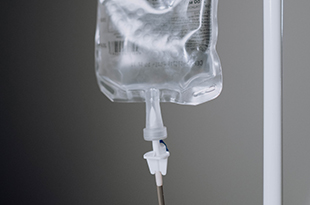
While the BMC2 target for contrast-induced nephropathy (CIN) is less than 3%, in Quarters 1 and 2 of 2017, Munson Medical Center was struggling with rates at 4.5%. In November of that year, the data was reviewed at the cardiology department meeting where a dynamic discussion ensued and gaps were identified. Munson was meeting the BMC2 targets for contrast and hydration orders but there were gaps in the hydration administration and documentation. Some patients were not getting hydration in the 6 hours pre-procedure and many times IV bags were not scanned into the medical record. There was also a misunderstanding of the post-PCI creatinine timeline and a gap in the process for post-PCI levels on outpatient cases.
A multidisciplinary team put together a plan and got started in January of 2018. PCI orders were updated so that all patients would get a post-PCI creatinine level prior to discharge. The cardiac cath lab director sent an email to all the interventionists and nursing unit educators to inform everyone of this change. Additionally, the PCI coordinator, data coordinator, and the physician champion met with the cath lab and cardiology nursing unit educators and managers to go over the problems and goals. A focus on hydration was added to unit huddles.
In April of 2018, nursing unit education was added, the CIN definition was clarified, and access to the EMS documentation system was acquired. The CIN rate decreased from 4.2% to 2.8%, all as a result of sharing data, clarifying the BMC2 definitions, identifying the gaps in the process, engaging the entire extended cardiology team, and collaborating with the STEMI team.